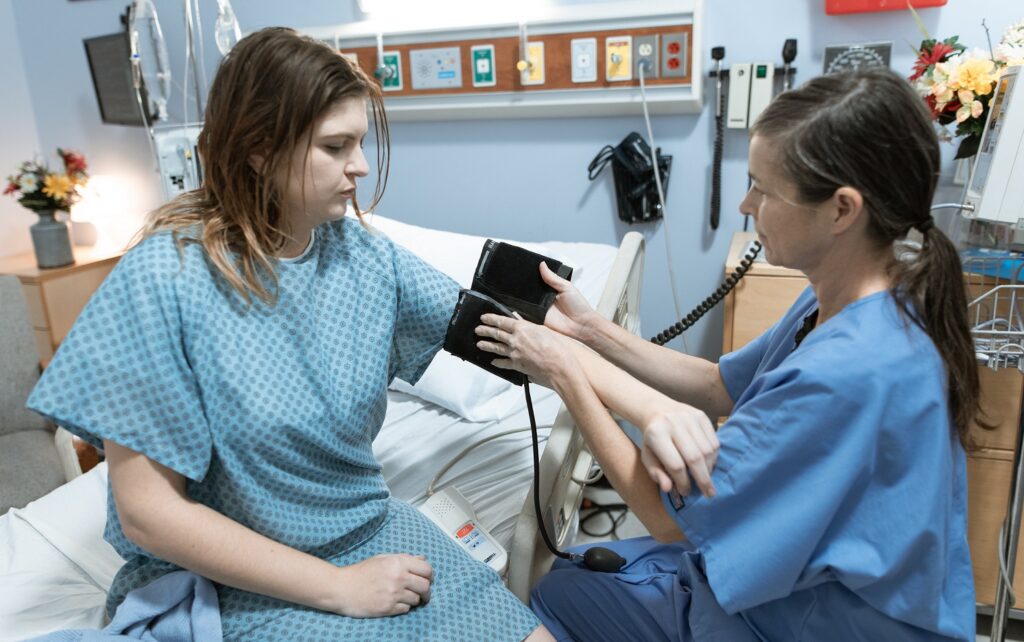High blood pressure, also known as hypertension, is a common health issue affecting millions of people worldwide. It is often referred to as the “silent killer” because it does not have any noticeable symptoms, yet it can lead to serious health problems if left untreated. Regular monitoring of blood pressure is essential to maintain good health and prevent complications. In this article, we will discuss the basic steps involved in checking your blood pressure.
Step 1: Prepare for the Test
Before you check your blood pressure, it is important to prepare yourself for the test. You should avoid smoking, drinking caffeine, and exercising for at least 30 minutes before taking the measurement, as these activities can temporarily raise your blood pressure. It is also recommended that you use the restroom before the test, as a full bladder can affect the accuracy of the reading.
Step 2: Choose the Right Equipment
There are two types of blood pressure monitors available: manual and automatic. A manual monitor consists of a cuff that you inflate manually using a bulb and a stethoscope to listen to the blood flow. An automatic monitor, on the other hand, uses an electronic sensor to measure the blood pressure. Both types of monitors are accurate, but automatic monitors are easier to use and require less training.
When choosing a blood pressure monitor, make sure it is properly calibrated and validated for accuracy. It is also important to choose the right cuff size for your arm, as an ill-fitting cuff can lead to inaccurate readings. You should measure the circumference of your upper arm and choose a cuff size that fits comfortably and snugly around your arm.
Step 3: Position Yourself Correctly
To get an accurate reading, you need to position yourself correctly before taking the measurement. Sit in a chair with your feet flat on the floor and your back straight. Place your arm on a flat surface, such as a table, with the palm facing upwards. Make sure your arm is at the same level as your heart.
Step 4: Take the Measurement
Once you are properly positioned, it is time to take the measurement. Follow these steps:
- Place the cuff on your upper arm, about one inch above the elbow.
- Inflate the cuff until it is snug but not too tight.
- Release the air slowly while listening to your pulse with a stethoscope (manual monitor) or waiting for the electronic sensor to display the reading (automatic monitor).
- Record the systolic pressure (the top number) and diastolic pressure (the bottom number) from the monitor display.
- Deflate the cuff and wait a few minutes before taking another measurement, if necessary.
Step 5: Interpret the Results
After taking the measurement, it is important to interpret the results correctly. A normal blood pressure reading is typically around 120/80 mmHg (millimeters of mercury). However, blood pressure can vary depending on various factors such as age, gender, and overall health. Your doctor or healthcare provider can help you understand what your blood pressure readings mean and whether you need any further testing or treatment.
If your blood pressure reading is consistently high, your doctor may recommend lifestyle changes such as losing weight, exercising regularly, reducing sodium intake, and quitting smoking. If lifestyle changes are not enough to lower your blood pressure, medication may be necessary to prevent complications such as heart disease, stroke, or kidney failure.
Checking your blood pressure is a simple yet essential part of maintaining good health. By following the basic steps outlined in this article, you can easily monitor your blood pressure at home and detect any potential health issues early on. If you have any concerns about your blood pressure readings, don’t hesitate to speak to your doctor or healthcare provider for guidance and support. Remember, early detection and prevention are the key to maintaining good health and preventing serious health complications in the future. By taking control of your health and monitoring your blood pressure regularly, you can make informed decisions about your lifestyle and take steps to prevent hypertension and other health issues.
It is important to note that blood pressure readings can fluctuate throughout the day, so it is recommended to take multiple readings at different times of the day to get a better understanding of your overall blood pressure levels. You should also consult with your doctor or healthcare provider to determine the appropriate frequency for checking your blood pressure based on your individual health needs and risk factors.
In addition to monitoring your blood pressure, it is important to maintain a healthy lifestyle to prevent hypertension and other health problems. This includes eating a healthy diet rich in fruits, vegetables, and whole grains, maintaining a healthy weight, exercising regularly, managing stress, and avoiding smoking and excessive alcohol consumption.

